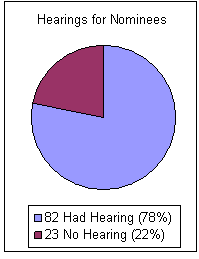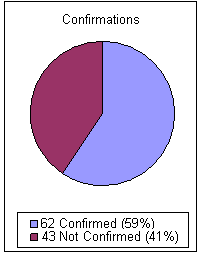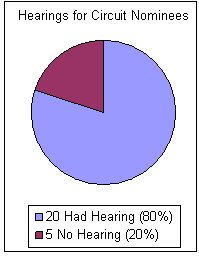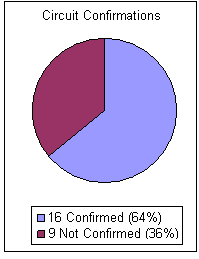

OLP works with the Attorney General in advising the President on nominations for Article III judgeships. After the President has submitted a nomination to the Senate, OLP works with the White House and the Senate Judiciary Committee in securing the nominee's confirmation. The data on this site provide an overview of the nomination and confirmation activity relating to each Congress since the 107th.
111th Congress - As of the end of the term
96 = Current vacancies in the 872- member Article III federal judiciary.
Article III judiciary includes the Supreme Court of the United States, Circuit Courts of Appeals, District Courts, and the Court of International Trade.
105 = Nominations submitted in the 111th Congress (excluding renominations)
 |
 |
 |
 |
 |
 |
|
* Excluding renominations
Definitions
Blue Slips
A blue slip is the traditional method of allowing the home state senators of a judicial nominee to express their approval or disapproval. Blue slips are generally given substantial weight by the Judiciary Committee in its consideration of a judicial nominee. The process dates back several decades and is grounded in the tradition of "senatorial courtesy," which traces its roots back to the presidency of George Washington.
Judicial Emergency:
A judicial emergency is defined as the following:
Circuit court
- any vacancy in a court of appeals where adjusted filings per panel are in excess of 700; or
- any vacancy in existence more than 18 months where adjusted filings are between 500 to 700 per panel.
District court
- any vacancy where weighted filings are in excess of 600 per judgeship;
- any vacancy in existence more than 18 months where weighted filings are between 430 and 600 per judgeship; or
- any court with more than one authorized judgeship and only one active judge.
The Federal Judiciary has posted a listing of Judicial Emergencies.
Archive (Judicial nominations from prior Congresses)


